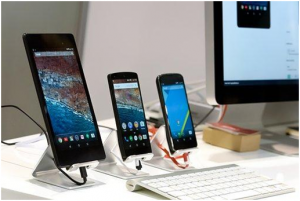Over the past years, Education technology has seen a steady growth. With virtual classrooms, ever-increasing usage of mobile devices, real-time collaboration, and gamification of education, the overall picture of today’s education system is quite different than the traditional classroom systems. Education technology companies are now coming up with innovative solutions based on advanced, artificial intelligence and machine learning to successfully bridge the learning gaps in our current system. The focus has shifted to the quality of learning content, creativity and student engagement. In this article, we will discuss the latest trends and tools of the edtech industry today.
-
Personalized Learning
Earlier, the learning content was designed with a general approach of one-size-fits-all. But today, content is given utmost importance. Learning has become more of a personalized experience for the students. The learning platforms today can adjust their information based on the learner’s responses. The educational content is created in such a way that it can suit each student’s requirements separately. It means that the learners can focus only on what they need absolutely and skip the content that they already know. This, in turn, makes the learning process much effective and quick.
Cooperation among the education technology institution and the students play a major role in personalizing the learning process. The teachers and students need to communicate regularly with each other regarding different projects, assignments, and course-related queries. A simple email conversation platform might not do justice to them. Hence, many of the educators use Slack. With features like public and private communication channels, Slack is something much efficient than a simple email conversation platform.
-
Collaborative Learning
The traditional model of learning generally involved one-way communication. The collaborative learning concept today allows every student to participate actively in the learning process. Teachers nowadays are using video-based lessons to make the learning process more interesting for the students. They are leveraging the technology of video-conferencing, webinars, and whiteboards to enable the students to work together, solve problems and complete projects.
Explain everything is one such interactive whiteboard application that gives an opportunity to the teachers and students to collaborate in real-time, share and reflect their knowledge and enhance the process of learning. The application has an easy-to-use design with screencasting features. Moreover, the users can explore new ideas or record, annotate, and animate their content with drawings, documents, images, and videos.
-
Cloud-Storage and Learning
Accessing information and learning content has become extremely easy for the students today through cloud-storage technology. The students can share and exchange their projects, essays, notes or other learning material easily with each other. Similarly, for the teachers, it has become easier to convey the information about the courses and other classroom announcements through cloud-storage platforms. They no more have to get worry about the assignments, essays or learning content getting misplace or delete. They can even share their courses with a global audience without getting worried about the increasing expenditure or time requirements.

No matter how innovative the teaching process be, still it can sometimes become difficult for the teachers to come up with new, creative and encouraging lesson plans for the students. Nearpod is an online tool that takes over these issues by providing a set of pre-made, interactive lessons for all educational levels and subjects to the teachers.
-
Feedback-Driven Learning System
The educational institutions today are making use of data for the betterment of the students and their courses. The adaptive learning platforms are intelligent tutoring systems are able to collect student data, determine their progress in the courses and generate appropriate feedback for them. These systems hold the potential to draw patterns from the students’ responses and suggest them new learning content as well. This data is also being use to determine the effectiveness of a course. Another aspect of the feedback-driven learning system is peer reviewing.
Students may not want their peers to assess their work but if the peer reviews seem relevant to the students, they will surely get engaged in the process. Peergrade makes this tricky task of peer reviewing much easier and authentic for the students. Generally, a teacher creates an assignment for the students as well as provides a set of instructions for the evaluation of the assignment to them. As students submit the assignment solutions, Peergrade distributes those assignments randomly among them. Then, based on their own knowledge and the instructions provided by the teachers, the students provide anonymous feedback to each other.
-
Mobile Education
Whether it is taking taxation law assignment help or collaborating with fellow students, mobile phones are being transformed into active and versatile educational tools today. The educators are using them as a medium for real-time communication with the students. The students can have direct feedback, classroom information and can find immediate answers to their queries with effective mobile communication systems.
Moreover, mobile learning eliminates every kind of geographical and time barriers. The students can get access to tailored high-quality content throughout their day. Mobile-learning has also made it much easier for the students to access media in their everyday life. Hence, it is important that we manage what content our kids are viewing or consuming every day. They should be focusing on something that is positive and engaging. One can use a tool called Smart feed to filter out the content that the students are viewing.
-
STEM + Art
We are already seeing that the STEM subjects (Science, Technology, English, and Math) are given much relevance as compare to the Art subjects. The STEM subjects are consider as future of innovation by incorporating them with the right technology. But, with the rise of the STEAM movement, championed by Rhode Island School of Design (RISD), creativity and arts have also made a significant position in the k-20 education. Art and Designs are now encouraged to a great extent in the education systems influencing the employers to hire more artists and designers to drive the innovation.
But, STEAM is not only about adding one more subject in the curriculum. It is something better than that. The STEAM movement encourages more practical learning among the students. This means that students are encourage to take up projects and learn how real-life problems are solve. With initiatives such as littleBits, STEAM learning has become accessible to many schools and students today.
Education Technology is for everyone
There is no doubt that innovation in education technology is becoming stronger day by day. Education today is blooming regardless of any barriers. The new technologies guarantee that every student gets the same opportunities for learning and development. No matter where ever they are. Not only this, the teachers today are able to find the right platforms and ways. Which they can leverage the technology for the betterment of their teaching methods and indeed the students.



Excellent article. I will be dealing with a few of these issues as
well..
Tetraonidae (Charli)